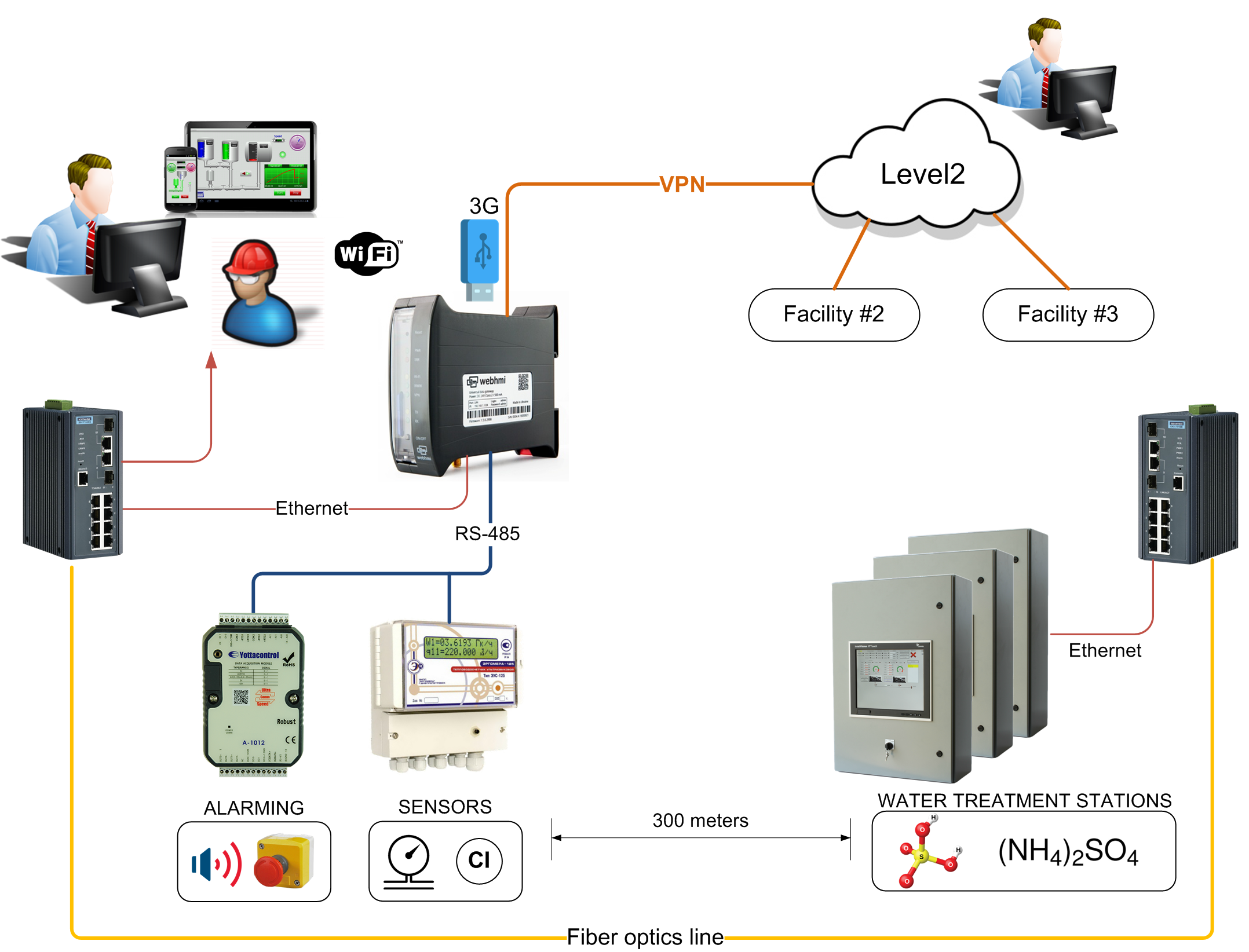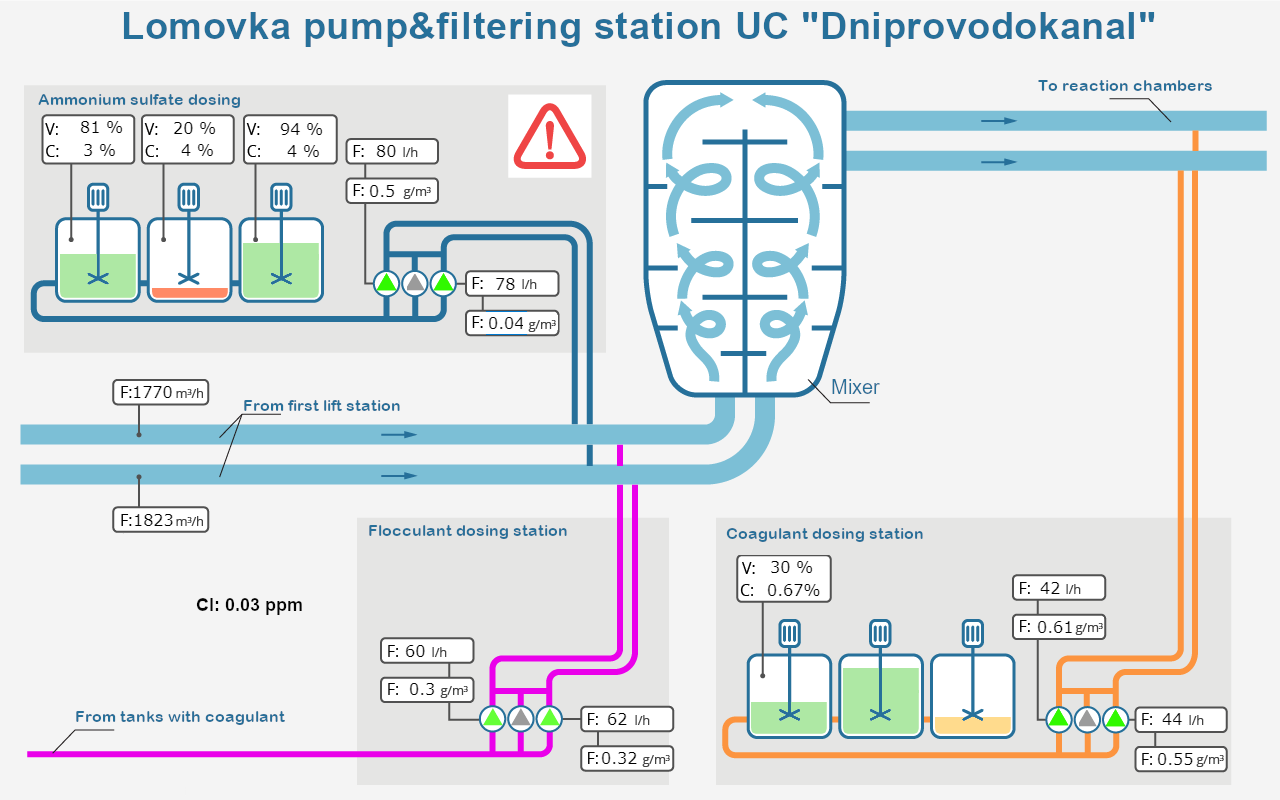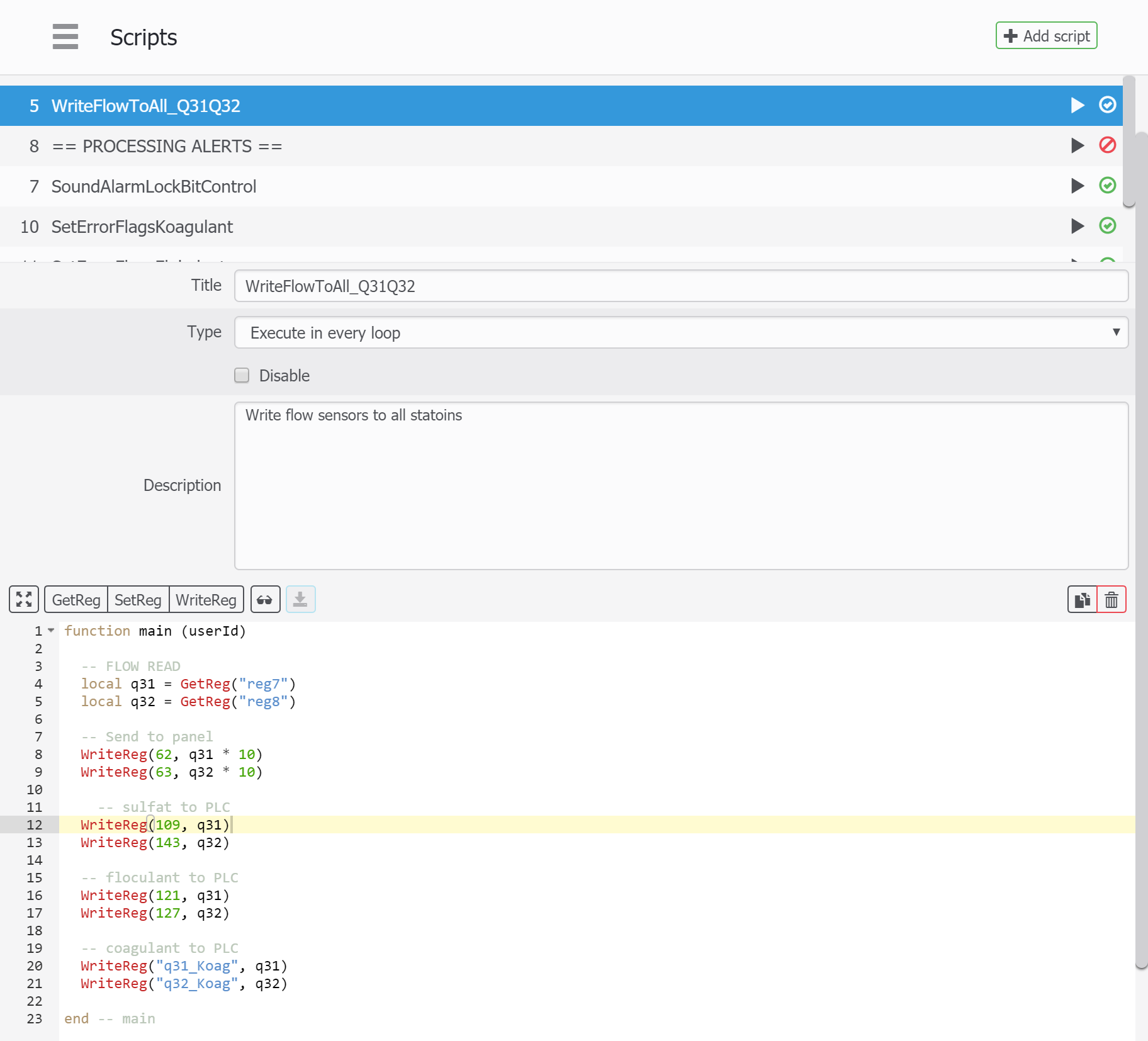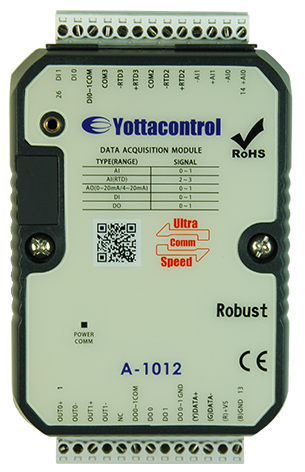
Supervisory control system for the municipal water supply facility
Description of the project
One of our customers, the company that installs and maintains water treatment stations, turned to us with the task of building supervisory system for the water treatment stations located at the Dnepr pump-filtering station(LNFS).
Local dosing stations for each of the required reagents have already been installed and successfully operated. However, they were installed at a fairly large distance from the control room operated in local control mode, when the dosage and the performance of the metering pumps were set manually by the operator. The local control mode did not allow the personnel to respond promptly to errors in the operation of the system and to adjust the dosage depending on the flow of water.
At the second stage of the system development it was required to provide:
- visualization of the status of all stations in the control room
- to realize light and sound alarms about emergency situations for personnel with the registration of the time of the occurrence of the accident and the moment of its confirmation
- to organize automatic transmission of the flow parameter in the main line to all stations in order to more accurately dispense (in the PLC program the possibility of working in the automatic mode was already realized in advance)
- provide a technical possibility in the future to add to the monitoring system an automatic station for chemical analysis of water using the Modbus RTU protocol
Equipment list
Dosing stations (based on Siemens S7-1200 PLC):
- coagulant dosing station
- ammonium sulfate dosing station
- dosing station for flocculant
Sensors:
- Water flowmeter Ergomera-125(RS-485, Modbus RTU)
- chlorine concentration sensor 4..20мА
Equipment for future installation:
- Automatic chemical water analysis station (Modbus RTU protocol)
Description of the solution
The initial idea of the project implementation was the installation of another control panel based on the S7-1200 with an analog input-output module and a communication module with a serial port, as well as an operator panel that was already purchased at the first stage of the installation of water treatment stations. Supervisory control system and stations in the project were supposed to be connected with fiber optics with “copper-optics” converters for Profubus supplied by Siemens.
In the course of carrying out a tender for automation works of the second stage and acquaintance with the capabilities of the WebHMI module, the customer made a choice in favor of the latter, due to a reduction in project costs and more unexpectedly rich functionality:
- The WebHMI module has built-in visualization, management, remote access to the system, a gateway function, and the cost of configuring the module for the project has resulted in significantly less programming and setup costs for all industrial automation, which requires a qualified programmer for the automated process control system. The PLC would need to implement a rather cumbersome exchange of the new PLC with existing ones (whose projects were closed and interfering with them would be extremely undesirable) and the Mo exchange dbus RTU via an additional COM port)
- Instead of expensive industrial converters “copper-optics” Siemens industrial Ethernet switches with built-in optical port Advantech were used.
- For input-output signal module, budget modules of YottaControl A-1012 production using Modbus RTU protocol were applied, which also allowed to reduce the cost of the solution.
Thus, the supervisory project of the pump-filtering station is effectively implemented on the basis of one WebHMI integration controller. Data from the flowmeter is read via the RS-485 port via the Modbus RTU protocol and automatically transmitted to all dosing stations of the reagents automatically. Also, through the scripts, a light and sound alarm is controlled. Access to the system can take place in different places – the dispatcher can work using a PC via Ethernet, a smartphone can be used in a fairly large coverage area of the WiFi network from WebHMI, and the existing operator panel was used as a duplicating device (the panel was able to work on Modbus RTU and was connected to WebHMI using the Modbus TCP server function). Due to the fact that the system is connected to the cloud service Level 2, and the operational service of the pumping station, and the solution provider can have remote access to the system via the Internet (3G modem is used for Internet connection).
Visualization of the current state of the stations
Data from all stations, flowmeters, sensors are read by WebHMI and displayed on the screens, displaying the current status of the stations and issuing emergency warnings. The same screens are accessible via the Internet.

Automatic control
Transfer of flow parameters to the PLC of dosing stations
With the built-in lua scripts, the flow values in the main line are simultaneously transferred to 3 reagent dosing stations.

Light and sound alarm control
 To alert personnel in the control room, an industrial light and sound alarm was installed to inform of accidents at each of the stations. A small program on the built-in WebHMI scripting language checks the status of each station and gives an appropriate signaling. After the alarm is triggered, the operator must confirm the response to the accident with the button in place, after which the alarm signal is removed for a while. In the event log of the operator, both the time of the occurrence of the accident and the time of confirmation are recorded.
To alert personnel in the control room, an industrial light and sound alarm was installed to inform of accidents at each of the stations. A small program on the built-in WebHMI scripting language checks the status of each station and gives an appropriate signaling. After the alarm is triggered, the operator must confirm the response to the accident with the button in place, after which the alarm signal is removed for a while. In the event log of the operator, both the time of the occurrence of the accident and the time of confirmation are recorded.
YottaControl modules were used as an I/O module for signaling, which are characterized by the simultaneous presence of different types of channels on board – discrete and analog (both input and output), which allows you to manage only one module for small objects. In addition to alarm management, the module is simultaneously used for the input of analog sensors (chlorine).
Development Opportunities
The presence of such an integration controller as WebHMI on the site makes the task of further development of the system simple. Due to the use of open technologies (industrial Ethernet, Modbus RTU protocol) it is very easy to add additional sensors or systems, such as level sensors, analyzers, etc. to the system.